Posted on Feb 28, 2018 in
COLLEGE DAZE
By Kassidi McKayla Kaminski

 Kassidi McKayla Kaminski is a sophomore studying Psychology in the Liberal Arts Honors Program at The University of Texas at Austin. After graduation she hopes to attend law school and is currently a member of Delta Gamma and a Young Life leader at Reagan High School.
Kassidi McKayla Kaminski is a sophomore studying Psychology in the Liberal Arts Honors Program at The University of Texas at Austin. After graduation she hopes to attend law school and is currently a member of Delta Gamma and a Young Life leader at Reagan High School.
I’m pro when it comes to having surgery. I’ve frequented enough hospitals to have a favorite, and I have had two sets of insurance to cover my atrociously high medical bills. God must have forgotten to give me an immune system when He made me, or maybe I’m just severely unlucky. In my most interesting surgery story, the culprit of my near-demise was the size of an Idaho potato.
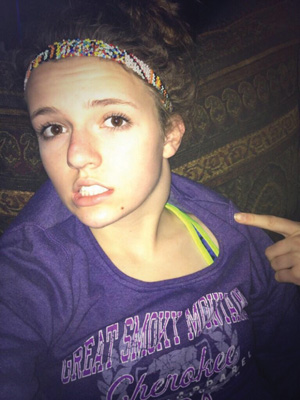
An obnoxious picture I took the night before surgery.
I credit my grandmother for saving my life. In late January of my junior year of high school, Nana began leaving frantic voicemails on my mom’s phone twice a day. A few days before these phone calls began, I was at my cousin’s baby shower. I had decided to throw my hair up in a neat bun, a rarity for someone who lets her curls run wild every day. With my neck exposed, Nana noticed something unusual — the left side of my neck was much larger than the right.
My mom and I didn’t believe her at first. Surely I would have noticed such an oddity already; I looked at myself in the mirror every day. Mom ran her thin fingers up and down the sides of my neck and admitted that it seemed a bit swollen but nothing to cause concern. But Nana kept calling until Mom finally agreed to make an appointment for a proper examination.
Up until this point in my life, I had been a relatively healthy child. Except for a broken pinky finger in fifth grade, seasonal allergies and a bad case of the flu in preschool, health-wise I was a parent’s dream. But needles were my crippling fear, and I suffered from white-coat syndrome (a polite way of saying doctors made my blood pressure skyrocket). So when my parents and I walked into the office of our family practitioner, morale was low, and anxieties were high.
Doctor #1 asked a few basic questions: Was I having any headaches, any loss of appetite, etc. When her cold, sanitized hands pressed against my warm neck, I felt an odd discomfort — like something in my neck had jumped. Convinced my lymph nodes were swollen from a bad case of mono, Doctor #1 ordered a full panel of bloodwork. I remember screaming, sending a rough kick to my dad’s stomach and a brief instance of vomiting, but at least I remained conscious.
I returned to school for the next week and warned my friends not to eat or drink after me. Mono is highly contagious, after all, and that’s what Doctor #1 insisted was wrong with me. But when she called Mom later that week with the results, we were confused – I didn’t have mono.
So Mom started making calls. Mom’s best friend is a physician with ties to one of the biggest hospitals in Houston, so she connected us with Doctor #2, an ear/nose/throat (ENT) specialist. Mom picked me up during sixth period for this next appointment; leaving school early to see doctors would become routine. In the few weeks before it, a constant fatigue had set in, and my neck had started pulsating with a dull, aching pain.
Doctor #2’s office was dark and lit only by the soft glow of scented candles. It looked more like a therapist’s office than an ENT’s. After reviewing my medical chart, examining me, and asking more questions, a grave look crept onto her face and siphoned any warmth I felt.
“I have an idea of what this is. And if I’m right, it’s not good. It seems like you have a swollen lymph node from a developing tumor. Based on the growth rate, this could be cancerous. But let’s run a CT scan and find out.”
The CT scan appointment arrived in early February. By that time the lump in my neck seemed to protrude more than it had in January, and I could barely keep my head upright without a regular dose of painkillers.
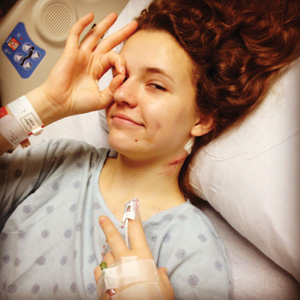
Hour one without the cyst, and the moment I developed a love for morphine.
The scan itself was not a pleasant experience. Even though I went in with two Valium pills in my system and their hallucinogenic side effects (I started imagining High School Musical characters on the car ride over), my fear of needles was not assuaged. When you get a CT scan, the doctors sometimes inject your IV with a radioactive dye called contrast, which helps block out x-rays so that structures like abnormal masses show up clearly on the picture. Once they wheeled me into the giant donut-like machine, they injected the contrast, and most people will tell you it makes you feel like you’re bleeding out of every orifice in your body. I left the clinic with a bruised arm, a metallic taste in my mouth, and looming anxieties for the results.
The word “cancer” slipped into the doctors’ dialogue more frequently. My friends and family didn’t want to say it out loud, but we were all thinking about it. I was 17-years-old; I didn’t have time for cancer. I was a three-sport athlete, and an A-honor roll student preparing for the SAT and college applications. I didn’t realize it in the moment, but I can now see how backwards my priorities were. While my family worried about me possibly dying, I worried only if my grades would slip or if I would still start on varsity basketball.
About a week later, Doctor #2 called with relieving news: the mass in my neck was benign. My parents and I sobbed once we heard the news, but my celebration was cut short. The mass wasn’t cancerous, but it was growing. Rapidly. Doctor #2 referred me to Doctor #3, whom I needed to see immediately.
Later that week my parents and I drove to the UT Physicians Medical Center in Downtown Houston to meet Doctor #3, another ENT who Doctor #2 felt was more qualified to deal with a mass of this size. His office has become my favorite. Every window in the lobby and the examination rooms gives a breathtaking view of Rice University and the Houston Zoo, a therapeutic distraction from what happens on the other side of the window.
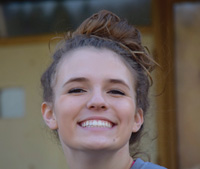
One year after surgery, my neck was still swollen, but I was in no pain.
Doctor #3 met us in the exam room to review my scans. He was a younger white man with jet-black hair and too cheery of a disposition for someone about to give me bad news. With an odd smile, he said, “It looks like you have a branchial cleft cyst — a lump found above the collarbone and the jugular resulting from a birth defect — in the left side of your neck. Right now it’s about the size of an orange, and we need to remove it before it becomes infected.” He explained that the pressure to my skull and my jugular was causing the headaches and difficulty swallowing. Even though this was something I had been born with, a two-week sickness of bronchitis, sinusitis and a double ear infection in late December led to drainage in my neck and triggered the cyst’s growth. Doctor #3 then admitted that the size of the cyst in a person my age was outside of his realm of expertise and referred us to his pediatric colleague.
Doctor #4, a middle-aged Indian man with a straightforward bedside manner, scheduled the surgery for mid-March. He prescribed a massive combination of antibiotics and painkillers to take every day for the two-and-a-half weeks leading up to the surgery. The cyst’s pressure on my throat made these pills near impossible to swallow, so my mom and I had to crush them up and mix them in applesauce like they do for the elderly in assisted living centers (to this day I can’t bring myself to eat applesauce). I had undeniably reached a new low.
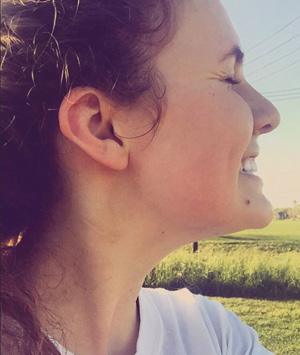
Two years after surgery with a slowly fading scar.
The fatigue I had been feeling morphed into complete depression. I tried my best to make jokes about my neck and to put up a lighthearted front, but most days I would just go home and cry. At a small suburban private school, everyone knows everyone else’s business. But instead of spinning my pain through the rumor mill, I felt nothing but support from everyone around me. Whether it was a silent hug or a never-expiring nurse’s pass, my teachers made it clear that I wasn’t facing this alone. Every day my friends shared new Bible verses of encouragement, listened to me while I cried, or invented fun things to distract me from upcoming surgery. Without them, my outlook on the situation would have been entirely different.
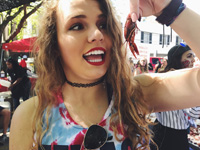
Three years after surgery with a perfectly symmetrical neck.
Those two long weeks finally came to a close. In the early morning hours of March 14th, 2014, my parents and I quietly drove to Memorial Hermann Children’s Hospital in the Medical Center. Since I was 17 at the time, I barely made the cut for a pediatric hospital, which was obvious by the fact that I was taller than both of the beds in the pre-op room and the nurses’ height instrument.
A round of nurses and anesthesiologists circulated throughout the room, each imparting pertinent information for the surgery. One resident asked for my permission to film the surgery, his band of residents nodding excitedly behind him. If the sheer size of my branchial cyst was impressive enough for medical research, surely I couldn’t deny the possibility of fame. One overly-excited intern arrived with a Sharpie in hand and asked, “Okay! So which side are we operating on?” I dryly questioned his vision and asked him to take a wild guess.
The next seven hours are a fuzzy haze of anesthetics and morphine. I remember the laughing gas, the prick of the IV, and fading into unconsciousness. I awoke swaddled in heating blankets and crisp hospital sheets with a nurse taking notes beside me. She offered me stale water and encouraged me not to move. Still under remnant effects of anesthesia, I very eagerly told the nurse that every doctor and nurse who passed by was my best friend, and that the animals on the walls were asking me to come play. When Doctor #4 came by to debrief us on the surgery, he also mentioned that he was leaving to board a plane to Turkey, and I immediately broke into a fit of turkey gobble noises.
The surgery itself lasted six hours — two hours longer than anticipated. Doctor #4 ran into an unforeseen problem: despite the two-and-a-half weeks of pill-popping before the surgery, the cyst had become extremely infected and had swelled from the size of an orange to an Idaho potato. The doctors inserted a six-inch drain to ensure that no fluids accumulated in the now cavernous area of my neck. It remained there for a week.
During my three days in the hospital, ten of my friends came to visit me, all overlapping one another so I would never be without someone. My parents and grandparents took shifts monitoring my pain. Despite a scare when I stopped breathing one night, those three days in the hospital were a breeze; I couldn’t complain about the 24/7 access to a morphine drip.
Recovery, however, was another story. Removing almost three pounds of mass from my neck severely affected my balance and subsequent walking. For a month after the surgery, my neck was inflexible, so when someone across the room called my name, I would have to shift my entire body to see them. The entire left side of my face was completely numb and tingly (a feeling I still have four years later), and the narcotics and sedatives slowly ate away at my stomach and filled my head with awful hallucinations.
Fortunately, my friends didn’t bail after the cyst was gone. When I finally returned home and was on bedrest for weeks, dozens of my friends ventured to my house to watch movies with me, babysit me so my parents could run errands, and encourage me when I felt sick to my stomach. My parents were always reluctant to leave me, but knowing they could trust my friends gave them the break they needed and deserved.

Four years after surgery and feeling grateful every day.
In total I missed over one month of school. I turned in my history research paper a month late, I didn’t finish my physics course until the last possible day, and I didn’t have a track season. I still can’t feel most of the left side of my face, and I’ve had three other cyst-related procedures (and eight non-related ones) since March 2014. But such an arduous, three-month obstacle taught me the importance of appreciating life’s little victories. Although I can’t completely feel the left side of my neck, I smile when my scar tingles because I know a nerve reconnected.
And still, to this day, I don’t order baked potatoes.








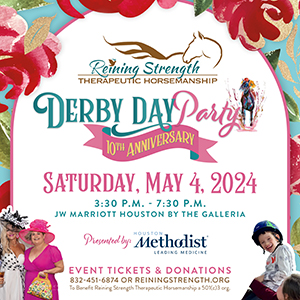
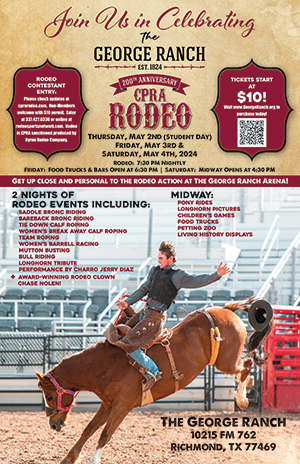





 Kassidi McKayla Kaminski is a sophomore studying Psychology in the Liberal Arts Honors Program at The University of Texas at Austin. After graduation she hopes to attend law school and is currently a member of Delta Gamma and a Young Life leader at Reagan High School.
Kassidi McKayla Kaminski is a sophomore studying Psychology in the Liberal Arts Honors Program at The University of Texas at Austin. After graduation she hopes to attend law school and is currently a member of Delta Gamma and a Young Life leader at Reagan High School.




